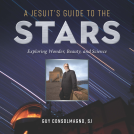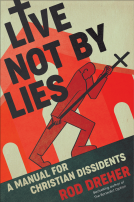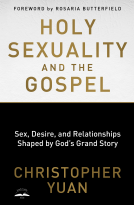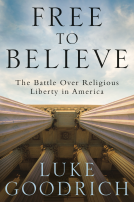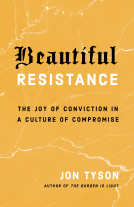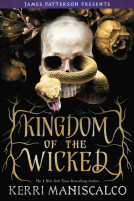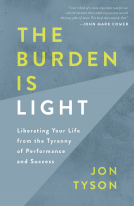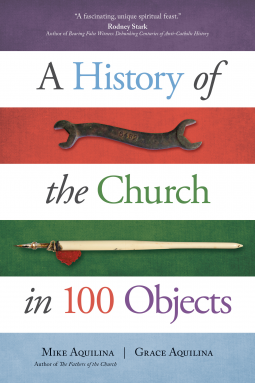
A History of the Church in 100 Objects
by Mike Aquilina; Grace Aquilina
This title was previously available on NetGalley and is now archived.
Send NetGalley books directly to your Kindle or Kindle app
1
To read on a Kindle or Kindle app, please add kindle@netgalley.com as an approved email address to receive files in your Amazon account. Click here for step-by-step instructions.
2
Also find your Kindle email address within your Amazon account, and enter it here.
Pub Date Oct 20 2017 | Archive Date Nov 30 2017
Talking about this book? Use #AveMariaPress #NetGalley. More hashtag tips!
Description
The star of Bethlehem exemplifies the birth of Jesus, the Wittenberg Door is synonymous with the Protestant Reformation, and “the pill” symbolizes the sexual revolution. It’s “stuff” that helps tell the story of Christianity.
In this unique, rich, and eye-catching book, popular Catholic author and EWTN host Mike Aquilina tells the Christian story through the examination of 100 objects and places. Some, like Michelangelo's Pietà, are priceless works of art. Others, like a union membership pen, don’t hold much monetary value. But through each of them, Aquilina offers a memorable and rewarding look at the history of the Church.
When Catholics tell their story, they don’t just write it in books. They preserve it in memorials, monuments, artifacts, and museums. They build grand basilicas to house tiny relics.
In this stunning book, Aquilina, together with his writer-daughter Grace, show how the history of the Church didn’t take place shrouded in the mists of time. It actually happened and continues to happen through things that we can see and sometimes hold in our hand.
The Christian answer to Neil MacGregor's New York Times bestseller A History of the World in 100 Objects, Aquilina’s A History of the Church in 100 Objects introduces you to:
- The Cave of the Nativity (the importance of history, memory, and all things tangible)
- Catacomb niches (the importance of Rome, bones, and relics of the faith)
- Ancient Map of the World (the undoing of myths about medieval science)
- Stained Glass (representative of Gothic cathedrals)
- The Holy Grail (Romance literature and the emergence of writing for the laity)
- Loaves and fish (a link from Jesus to the sacrament of the Eucharist)
- The Wittenberg Door (Martin Luther and the onset of the Reformation)
God makes himself known and accessible through material things, always accommodating himself to our condition. It is, after all, the condition he created for us—spiritual and material—and the form he assumed for our salvation.
A Note From the Publisher
Aquilina earned a bachelor’s degree in English/writing (Phi Beta Kappa) from Penn State University in 1985. He is the author or editor of more than fifty books, including The Fathers of the Church, The Mass of the Early Christians, and Angels of God. He contributed work on early Christianity to the Encyclopedia of Catholic Social Thought. Aquilina has cohosted ten series on EWTN and hosted two documentaries. In 2015, Aquilina wrote the companion volume to the NBC miniseries A.D.: The Bible Continues, and in 2016, he wrote the companion volume to the MGM remake of the movie Ben-Hur.
He has published hundreds of articles, essays, and reviews in periodicals such as First Things, Crisis, National Catholic Register, The Priest, Columbia, and Our Sunday Visitor. He is a frequent guest on TV and radio, including a weekly appearance on the Son Rise Morning Show.
Aquilina previously served as editor of New Covenant: A Magazine of Catholic Spirituality, The Pittsburgh Catholic, and Black Box Corp. He also worked as editorial director at The Barash Group. He has received honors from the Catholic Press Association, including “Best Magazine” for New Covenant during his editorship.
He lives in the Pittsburgh, Pennsylvania, area with his wife, Terri. They have six children.
Grace Aquilina is a freelance editor who lives in Pittsburgh, Pennsylvania.
Advance Praise
“A picture is worth a thousand words. Mike Aquilina, with skill and encyclopedic knowledge, gives new meaning to this old maxim. In A History of the Church in 100 Objects we discover the rich story of our faith uniquely told through great pictures and explanations really worth knowing. Everyone should have this book.”
Cardinal Donald Wuerl
Archbishop of Washington, DC
“A fascinating, unique spiritual feast.”
Rodney Stark
Distinguished Professor of the Social Sciences at Baylor University
Author of Bearing False Witness: Debunking Centuries of Anti-Catholic History
“This stunning new book shows how much grace can be found in everyday objects. Through the ordinary matter of desks and stones, tunics and textbooks, bottles and parchment, the Aquilinas weave together a beautiful picture of God at work. For lovers of history, faith, and matter, A History of the Church in 100 Objects is a delight.”
Emily Stimpson
Creator of The Catholic Table and coauthor of The Catholic Almanac
“Richly entertaining and highly informative, A History of the Church in 100 Objects is a journey through two millennia of Catholic history in the company of gracious and knowledgeable guides. A gem to enliven faith while shedding fresh light on the Church’s long pilgrimage through the centuries. I recommend it with pleasure.”
Russell Shaw
Author of American Church: The Remarkable Rise, Meteoric Fall, and Uncertain Future of Catholicism in America
“A thoroughly enjoyable book by an author who is always inspiring, stimulating, and thoroughly enjoyable! I can’t think of a more captivating way to follow John Henry Cardinal Newman’s challenge to become ‘deep in history.’”
Marcus Grodi
Founder and president of The Coming Home Network International
“Mike Aquilina demonstrates once again a profound ability to impart vital teachings about the Catholic faith in a way that can be appreciated by anyone. A collection of objects, seemingly unrelated and spread across the globe, demonstrate poignantly both the universality of the Church and her relevance to every era. Aquilina truly is one of American Catholicism’s most gifted, articulate, and clever writers.”
Matthew Bunson
Senior fellow of the St. Paul Center for Biblical Theology
Coauthor of Encyclopedia of Saints and The 35 Doctors of the Church
“My heart was stirred. A beautiful book about how God works through real stuff in Incarnation to bring the mysteries of the spiritual realm into this phenomenal world. As usual, Mike Aquilina uses words with real craft and art to take us beyond words into the mysteries of God in Christ.”
John Michael Talbot
Catholic musician, author, and founder of the Brothers and Sisters of Charity
“Catholicism means ‘stuff counts,’ because God chose the stuff of this world to bring His people to salvation—a process that begins with Creation, reaches its apex in the life and ministry of Jesus, and continues today with the sacraments, in which the stuff of this world becomes a vehicle for sanctifying grace. Mike Aquilina tells the story of the Church through some very important stuff in an engaging and thought-provoking contribution to the New Evangelization.”
George Weigel
Distinguished senior fellow and William E. Simon chair in Catholic Studies
Ethics and Public Policy Center
Available Editions
| EDITION | Other Format |
| ISBN | 9781594717505 |
| PRICE | $24.95 (USD) |
| PAGES | 256 |
Featured Reviews
 Christi S, Reviewer
Christi S, Reviewer
Very entertaining yet incredibly informative and useful!
 Alex P, Reviewer
Alex P, Reviewer
What a treasure this book is. It is almost completely a Catholic history, but I found great value in its pages. From the early church through present day, the authors take us through a series of objects that provide signposts along the way. While that may initially seem like a minor detail, I found it to be a deeply enriching experience.
I am not Catholic, but I found myself feeling a kinship with this history. Some mystical, some practical, and all addictingly compelling.
 Educator 122989
Educator 122989
Interesting way to work through the history of the Christian Church. Range of objects considered varies from Christian "relics" to a wide variety of items associated with mostly significant historical or theological events. Each very readable chapter is concise and ends with resources for further study. Classroom teachers likely will find the information in this book a useful resource for enriching lectures.
 Maren R, Reviewer
Maren R, Reviewer
This book is a good introduction to the church history in general.
I actually found it quiet fascinating how much time was covered with those 100 objects and i loved that it included so many references to get more information if that was something the reader wishes to do for specific objects or specific historical moments.
If you are interested in learning more about history, specifically about religious aspects -what made them, where they came from, why they became religious artefacts and so on- this book is defiantly worth a look through.
 Bronwyn D, Reviewer
Bronwyn D, Reviewer
A History of the Church in 100 Objects is a delightful book. It is an easy and enjoyable read with each pictured object limited to two or three pages of discussion.
By definition, the limited space given to each object means that sometimes significant facts or events have had to be left out or over-simplified. Because of this at times the stories can feel a little one sided. However in saying this, the book never claims to provide an in-depth analysis of any topic. I am inspired to follow side paths, with book recommendations provided at the end of each little article.
The limit of 100 objects is also restrictive – much of church history has to be left out by definition. It would be nice to see a greater expansion of non-European and non-American objects or even more focus on the Orthodox and Protestant streams of church history. Maybe ‘A History of the Church with 1000 Objects’ could become the companion edition.
I particularly enjoyed the less well known objects that were selected – the Byzantine marriage ring or the parking pass for Vatican II.
One caution – this book is highly addictive. I found myself sitting down to quickly dip into the book and read about one or two objects, only to finally put the book down several hours later.
 R B, Librarian
R B, Librarian
We have another title from this author, hopefully this will be added. This book is fascinating both from a Catholic perspective, and as someone interested in history. I really liked that the text supporting each image is pertinent, informative and concise. This book will help you see God's continuing hand in the out-folding of salvation history within His church and the world. An encouragement in these trying times. Recommended.
 Ruth C, Reviewer
Ruth C, Reviewer
We Catholics like our "stuff". While the trend in church buildings in the 1960's and 1970's may have been minimalist and utilitarian, today's new churches tend to look like churches with stained glass, statues and a sanctuary with a tabernacle front and center. We are physical beings and our senses can bring us closer to God.
A History of the Church in 100 Objects uses pictures of our "stuff" as leadoffs for chapters on the history of our faith. If you click the Amazon link above and page though the sample pages, you'll see that it is a beautiful book. As a history buff and a Catholic I found it fascinating and learned some new stories (because what is history of not his (and her) story?
Thanks to the publisher for making a review copy available via NetGalley. Grade: B+
 Conrade Y, Reviewer
Conrade Y, Reviewer
How do we study history? For most of us, we would hit the books or listen to some historians explain the stories of the past. Others would go deeper into the science of archaeology or ancient artifacts. Modern technology gives many of us a way to search for information about the past. For author Mike Aquilina, "stuff" matters because they all tell a unique story. More specifically, the history of the Church could be traced through the examination of objects. These objects are then situated in seven eras:
1) The First Century Church (Apostles and Martyrs)
2) The Roman Empire (First to Third Centuries)
3) The Dark Ages (4th to 8th Century)
4) The Middle Ages (5th to 15th Century)
5) The Renaissance and Reformation (16th to 17th Century)
6) The Age of Revolutions (18th to 19th Century)
7) The Global Village (Our Modern 21st Century World)
The key idea is that these objects tell a story. Beginning with the first century Church right through to modern era, readers get to see real stuff being used as pointers to the past. The silver star in Bethlehem's Basilica of the Nativity confirms what the ancients had seen prior to the birth of Christ. Not only does it represent eye-witness accounts, it affirms the story as depicted in the Bible. We read about paving stones, wooden posts, ancient amulet, catacombs, and many fascinating events in history. The chains of Peter show us how the apostle Peter was imprisoned, even tortured. As we move on to the Roman era, the monuments like the Colossus bring us back to the times of persecutions and political chaos prior to the Edict of Constantine. Even soil in Jerusalem's Basilica of the Holy Cross were used to remind us about the purpose why they were there in the first place.
The Dark Ages is a time of transition amid the uncertainty after the fall of Rome. With Christianity losing ground to Islam, books were preserved. Relics were kept. Icons, vessels, and coins are all symbols of the past. Even a wine vessel gives us a glimpse of a time of disappearing infrastructure, ransack by bandits; risky travel; loss of social graces; and a world in need of leaders. The coin of the Umayyad Caliphate reminds us of a time in which the Muslims dominated large parts of Europe and the Middle East at a time where the author perceives: "Christianity had spread by persuasion. Islam was spreading by force." Interestingly, objects during the Dark Ages are few when compared to the later periods. This is probably due to the disarray and confusion happening at that time with no order or infrastructure in place to maintain a library or a sense of history.
The Middle Ages is time where religious art flourished due to the monarchs becoming patrons of the arts. It was the golden years of a society defined by the marriage of religion and state. Literature were written. Written language was either invented or improved. Missionary activities increased and the Church had unprecedented growth. With it came corruption as well as the ugly crusades. Religious wars ensued and contributed to lots of disillusionment with religion playing her role in society. Then came the Renaissance (printing press, compass, science, arts) for the general public and the Reformation (symbolized by the Wittenberg door) for the Church. Both are movements that pushed back against the ills of the Middle Ages. Gradually, we move on to the objects depicting the Age of Science, Politics and Revolutions. There was the Declaration of Independence of the New World out in North America. The guillotine was an advanced form of executing criminals, also used to eradicate political opponents. The Holy Water bottles showed the continued influence of the Church in spite of the declining popularity of the religious institutions. Readers who prefer an era more relevant would be intrigued by the last section of the book, which deals with the "Global Village." Here, there are familiar things like newspaper headlines; voting ballots; fountain pen; the radio; parking passes; the abortion pill; and so on. The author tries to go global by including a Korean cathedral; a San Salvador altar of sacrifice; as well as offerings given by pilgrims from all over the world. All of these give readers a tiny glimpse of the oceans of history and events in the past from a tiny perspective through the eyes of the author. A different author might retell the story in a different way but that does not change the facts of history. So, what will we get out of reading this book? We read about a big story of human progression from the eyes of the Church.
There is a verse in the gospel of Luke where Jesus replied to the Pharisees: "I tell you, if they keep quiet, the stones will cry out." It was the occasion of Jerusalem entering Jerusalem which triggered much joy for the people hoping for a new king. Many people openly expressed their excitement by laying down their cloaks on the ground; singing and shouting out their praises; and many other expressions of happiness. When asked by the Pharisees to Jesus to keep his disciplines quiet or to drown out the revelry, Jesus told them that such joy couldn't be suppressed. In the same way, the objects described in this book all have a story to tell. We could ignore them but they all contain a story of long ago, something that we could learn from. When given time and discernment, we could trace a pattern, link up isolated events, and to form a picture of the past. This is what the 100 objects had been used, to link up the major events of history from the first century to the present. Of course, one may argue about the exact number of objects. Why not 200? Why not 500? Why not 1000? Aren't there other objects yet to be discovered? It would take a lifetime or more to just tell part of the story. I gather that the ability to piece the parts together also depends on the author's personal knowledge of historical happenings and circumstances leading to the discovery of these relics. It is thus fair to see this book as a snapshot or a glimpse of the past, and to help us appreciate more of the history, the tradition, and the sacrifices made for us to keep the faith. The Christian Church has a checkered history, and the objects do not prejudge. They merely describe what happened, especially what happened to them.
Perhaps, this book and the way the stories are told could inspire us to do the same where we are. Indeed, Mike Aquilina has given us a literary time capsule!
Rating: 4 stars of 5.
conrade
This book has been provided courtesy of Ave Maria Press and NetGalley without requiring a positive review. All opinions offered above are mine unless otherwise stated or implied.
 Deborah M, Reviewer
Deborah M, Reviewer
Although I express my Christianity as a Protestant I am fascinated by the Catholic Church and our joint and divided history. This topic was shown well in this book which I found very interesting. Some of the topics I was surprised by, such as Arms and Armor, but when brought into context made sense. I was also surprised but pleased to find Barney, the purple dinosaur mentioned.
This was an enlightening read and is a recommended primer for those interested in the history of the Catholic Church.
I was given this book by NetGalley and the publisher. This is my voluntary and impartial review.
 Sr. Marie P, Media/Journalist
Sr. Marie P, Media/Journalist
Whether you like or dislike the study of history, you'll find this book an interesting, fun read. The author capitalizes on what is the most preferred way of learning - experiential and visual learning. Using the tangible, Mike Aquilina explores Church History in an intelligent, conversational, interesting fun sharing. Clearly Aquilina loves what he shares and it's infectious. It's a great book for learners, teachers and those interested in Church History.

